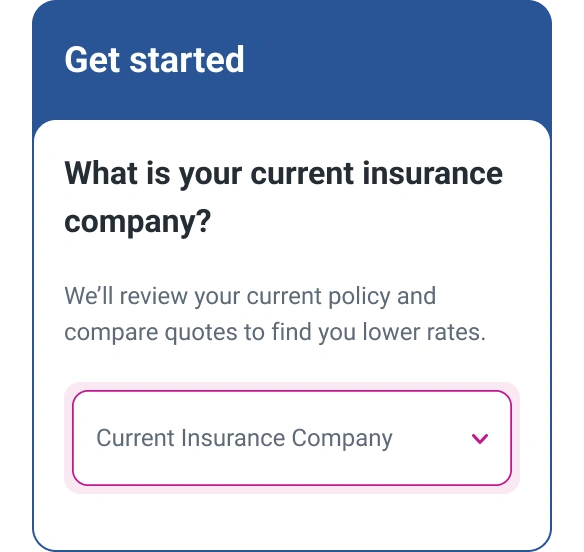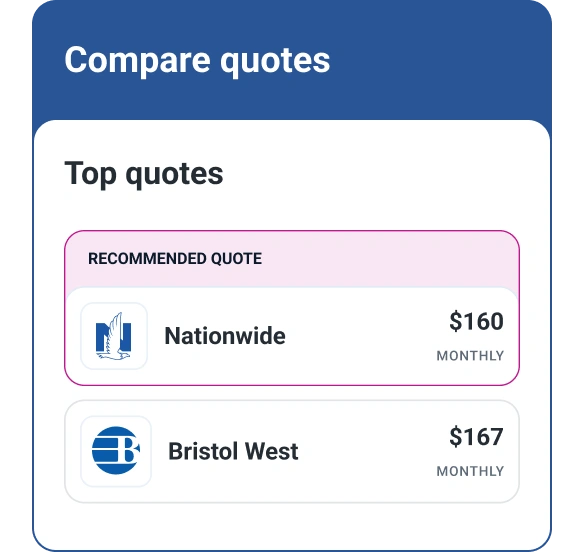Stacked vs. Unstacked Car Insurance
Quick Answer
If you’re injured in an accident caused by an uninsured or underinsured driver, your policy may cover your medical costs up to a certain point. Stacking insurance allows you to increase that limit by combining coverage from multiple vehicles.

If you get into an accident with an uninsured or underinsured driver, your insurance carrier may cover some of the costs. That can include medical bills and property damage, but your coverage will be capped at a certain amount. If your state and insurer allow it, you could combine coverage limits from more than one vehicle—otherwise known as stacking. The difference between stacked and unstacked auto insurance is that stacking offers more robust protection if you're injured by a driver who's uninsured or doesn't have adequate coverage.
What Is Stacked Car Insurance?
Each state has its own minimum car insurance requirements. Depending on where you live, you may be required to purchase uninsured motorist coverage (or a combination of coverage to protect against underinsured and uninsured drivers). Even if it isn't required, you may choose to purchase it for your own peace of mind. Stacked car insurance allows you to increase your coverage amount by combining coverage limits from multiple vehicles.
Stacking on One Insurance Policy
This is when you stack coverage limits from multiple cars that are on the same insurance policy.
Let's say your policy includes your car and your spouse's. Each vehicle is covered for up to $20,000 for bodily injuries caused by an uninsured or underinsured driver. Stacking your insurance allows you to combine that coverage to $40,000. That effectively doubles the amount that your insurer will pay if your claim is approved.
Stacking Across Multiple Insurance Policies
If you have more than one car, you might have two insurance policies in your name.
In this case, it may be possible to stack the coverage limits from both policies. If you get hurt in an accident caused by an uninsured/underinsured driver, you could combine your coverage limits to pay for resulting medical expenses. Using the $20,000 bodily injury limits from the above example, stacking across multiple policies would allow you to add coverage from the policy for the car you were driving during the accident ($20,000) to coverage from the car on the second policy in your name ($20,000) for $40,000 in total coverage.
Pros of Stacked Insurance
The main advantage of stacked auto insurance is that it increases your coverage amount if you have a run-in with a driver who doesn't have adequate insurance. That could be a game changer if you're involved in an accident that results in steep medical bills. Otherwise, you could face much higher out-of-pocket costs.
Cons of Stacked Insurance
- It's more expensive. The amount you'll pay depends on your state, policy and insurance carrier. One 2022 analysis by QuoteWizard found that stacking insurance in Florida, for example, resulted in an average increase of $36 per month.
- Not all states allow drivers to stack their insurance. Even if it is allowed, some insurers may refuse to offer it.
- You can only stack insurance to increase bodily injury coverage. Property damage coverage limits cannot be stacked.
States That Allow Insurance Stacking
The following states allow insurance stacking, according to The Zebra:
- Alabama
- Arkansas
- Colorado
- Florida
- Hawaii
- Indiana
- Kentucky
- Mississippi
- Missouri
- Montana
- Nevada
- New Hampshire
- New Mexico
- Ohio
- Pennsylvania
- Rhode Island
- South Carolina
- Vermont
- Virginia
- West Virginia
- Wisconsin
- Wyoming
States Where Stacking Is Only Available With Multiple Policies
- Delaware
- Georgia
- New Jersey
- New York
- North Carolina
- Oklahoma
- Oregon
- Tennessee
- Texas
- Utah
What Is Unstacked Car Insurance?
If you have unstacked car insurance, it means you cannot combine your coverage limits. If one of your cars is involved in an accident caused by an uninsured or underinsured driver, your policy should state your bodily injury coverage limit for that vehicle.
Pros of Unstacked Insurance
Higher coverage limits usually result in a more expensive policy. This is why unstacked car insurance is generally less expensive than stacked coverage. That may not be an issue for budget-conscious drivers who are comfortable assuming more risk.
Cons of Unstacked Insurance
The biggest drawback of unstacked insurance is that your coverage limits are lower. There's no way of knowing whether or not you'll be involved in an accident with an uninsured or underinsured driver. If you are, and you have unstacked coverage, you could face high out-of-pocket costs—especially if you're seriously injured.
Should I Get Stacked or Unstacked Insurance?
Every driver's insurance needs are different. Ask yourself the following questions when deciding between stacked vs. unstacked insurance:
- Is stacked insurance allowed in your state?
- If it is permitted, have you found a reputable carrier that offers it?
- How much would stacked insurance increase your premiums?
After gathering multiple quotes, be sure to compare coverage limits and premiums to find the right auto insurance policy for you.
| When to Consider Stacked Car Insurance | When to Consider Unstacked Car Insurance |
|---|---|
|
|
The Bottom Line
The main difference between stacked and unstacked auto insurance is that stacked coverage offers better protection against uninsured and underinsured motorists. If you or one of your passengers are hurt in an accident caused by one of these drivers, the medical bills could add up fast. Stacked car insurance allows you to combine coverage from multiple vehicles, which could significantly reduce your costs if you're injured in an accident.
No matter what type of car insurance you choose, maintaining healthy credit could help you avoid high premiums. In some states, insurers consider credit-based insurance scores when setting their rates. You can check your FICO® ScoreΘ and credit report for free and credit report for free with Experian.
Don’t overpay for auto insurance
If you’re looking for ways to cut back on monthly costs, it could be a good idea to see if you can save on your auto insurance.
Find savingsAbout the author
Marianne Hayes is a longtime freelance writer who's been covering personal finance for nearly a decade. She specializes in everything from debt management and budgeting to investing and saving. Marianne has written for CNBC, Redbook, Cosmopolitan, Good Housekeeping and more.
Read more from Marianne

